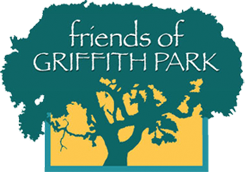UCLA Bobcat Study Finds Wild Cats and More in Griffith Park
GRIFFITH PARK IS AN ISLAND OF NATURAL HABITAT for native bobcats allowing these beautiful and elusive creatures to exist in our congested metropolis. With urbanization posing a threat to wild cats worldwide, it is vital that steps be taken to ensure the continued survival of the Park's population.
Since 1996, National Park Service (NPS) biologists have been studying bobcats in Santa Monica Mountains National Recreation Area (SMMNRA). In September 2010, NPS collaborator Laurel Klein extended the study to Griffith Park as part of her UCLA Ph.D. dissertation research. Friends of Griffith Park is pleased to have contributed financial support to her fieldwork.
Ms. Klein's research aims to assess the effects of urban development on disease susceptibility in bobcats in urban areas around Los Angeles. This study involves capturing bobcats, collecting blood samples, and tagging and releasing individuals at the site of capture. Blood samples are used for genetic analysis, disease surveys, anticoagulant rat poison exposure testing, and basic veterinary diagnostic assessments. Seven bobcats have been captured in Griffith Park, and three have also been radio-collared, allowing researchers to track and record data on the bobcats' movements. All of the captures have appeared healthy, though blood and anticoagulant exposure screening results are pending. Across Southern California, more than 80% of bobcats tested for anticoagulants have been positive. Thus, we expect that bobcats in GP are also exposed to these prevalent poisons. These GP bobcats also appeared to be free of mange, an ectoparasitic disease that has devastated bobcat populations in other parts of SMMNRA, though results on a disease survey test to assess subclinical infection are also pending.
Controlling Threats to Griffith Park Bobcats and Wildlife
Friends of Griffith Park is working to get the word out to Park users and neighbors about ways to alleviate human-caused dangers to bobcats and other species.
Insensitive development in Griffith Park can cause the twin evils of loss of habitat and habitat fragmentation. Increased traffic on park roads, re-opening of closed roads and road widenings can result in deadly encounters between wildlife and automobiles. These problems can only be resolved through committed environmental advocacy for Griffith Park's voiceless populations.
But some of risks faced by wildlife are a direct result of individual choices. Off-leash dogs are a continuing and needless threat to bobcats and their young and all wild creatures. By obeying the law and walking their dogs on leash in Griffith Park, pet owners prevent injury to its natural denizens and help the Park's native species survive.
Park neighbors concerned about rodent control, can avoid sickening and killing bobcats and other animals by using alternatives to rat poisons. They can:
- Encourage natural predators by providing boxes and perches for owls (see www.hungryowl.org for more information)
- Rodent-proof their residences and other built structures by sealing holes and removing plant debris and trash from premises.
- Use tried-and-true mechanical rat traps. Traditional wood snap-traps are inexpensive and readily available in the hardware aisle.
Friends of Griffith Park looks forward to the ultimate findings of Ms. Klein's research and will continue to update this page as information develops. Also read more at www.urbancarnivores.com.
 A Griffith Park bobcat looks boldly into the camera. |
 This grey fox caught and released at Mt. Lee provides the first photographic evidence of a species whose presence in Griffith Park had been confirmed previously by tracks. |
 This chart shows the cycle by which anticoagulant rodenticides, or rat poisons, reach bobcats and other animals. Instead of using poisons, please consider other ways to control rodents that are not toxic to wildlife. (Drawn by and used with permission of UCLA biology student Christine Danner).
This chart shows the cycle by which anticoagulant rodenticides, or rat poisons, reach bobcats and other animals. Instead of using poisons, please consider other ways to control rodents that are not toxic to wildlife. (Drawn by and used with permission of UCLA biology student Christine Danner).
